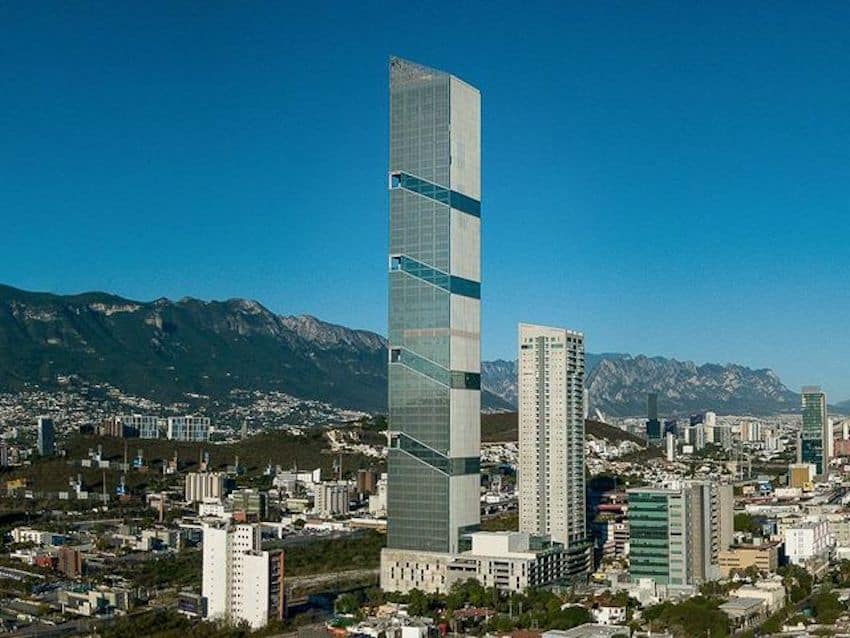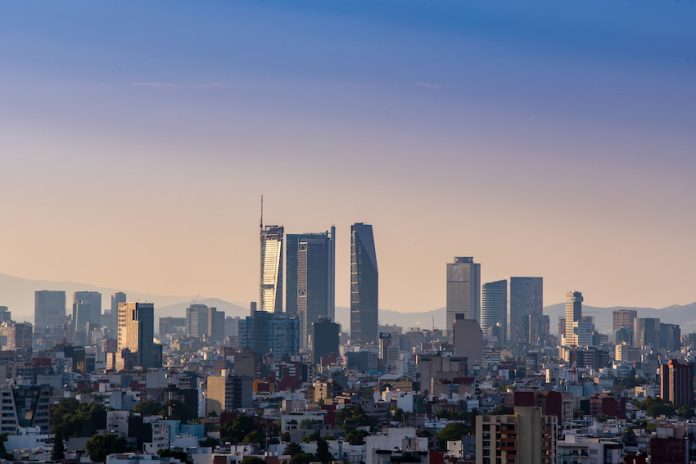The average size of skyscrapers in Mexico has increased over the past 10 years, a trend that is expected to continue as demand for office and residential space continues to grow, real estate market analysts Siila said.
According to Siila, since Mexico’s first skyscraper was built in 1956 – the 204-meter Torre Latinoamericana in Mexico City – the average height of buildings has grown decade-on-decade (see our previously published Mexico in Numbers on skyscrapers).

Buildings like the World Trade Center (207 meters), Torre Mayor (225 meters) and the Torre Pemex (212 meters) in Mexico City were all built during the 1980s and 1990s, when the height of tall structures increased by 13% to 20%, the analysis said.
Later, between 2010 and 2020, skyscrapers became even taller – 33% higher than the previous decade.
In 2017, the KOI Tower in the San Pedro Garza García area of Monterrey, became the tallest skyscraper in Mexico at 279.5 meters high. In 2020, it was displaced by the Torre Obispado in the same city. At 305 meters high and 62 stories, it is currently the tallest building in Latin America.
As the height of tall buildings rises, so does the number – in the last ten years, Mexico has seen 10 tall to supertall buildings completed per year and is home to over 160 skyscrapers between 50 to 300 meters tall. Most of these are in Mexico City and Monterrey, which hold 46% and 27% of the country’s skyscrapers respectively.

Two new skyscrapers, Torre Puerta Reforma (305 meters) in Mexico City and Torre Rise (475 meters) in Monterrey are also projected to be built in the coming years. The latter would become the tallest building in Latin America upon completion. The size of these two new buildings represents a further 80% increase in the height of new supertall buildings.
This demonstrates the speed of the verticalization of cities, Siila said, particularly in Mexico City and Nuevo León, which seem to be in a race to build skyscrapers.
“Skyscrapers represent power, economic capacity and technological advancement. As cities become denser and space becomes scarce, verticality turns into an attractive solution to optimize available surface area,” says the report.
This statement is echoed by the 2023 Great Verticalization Report (GVR) from real estate firm 4S Real Estate Foresight, which reported that Mexico has seen “sustained growth” in recent years despite the COVID-19 pandemic – more vertical housing units were sold in 2022 than at any other time.

Another benefit of building upwards, says the GVR, is that the total cost of land and construction is reduced by increasing the height of buildings in high-demand areas.
However, high building density represents a challenge, as it impacts accessibility and mobility, which increases demand for transportation solutions and adequate public spaces. Urban planning, infrastructure, sustainability, environmental impact, visual impact, energy consumption, waste management, carbon footprint and resource efficiency are also vital concerns related to the construction of skylines, Siila said.
On the other hand, because tall buildings heavily rely on the office sector, it’s also important that this industry “continues to strengthen,” to support construction of vertical buildings, it added.
Hence, the evolution of skyscrapers in Mexico will depend on how developers and the public sector balance vertical growth, market demands, sustainability and quality of life in urban areas.
With reports from El Economista
